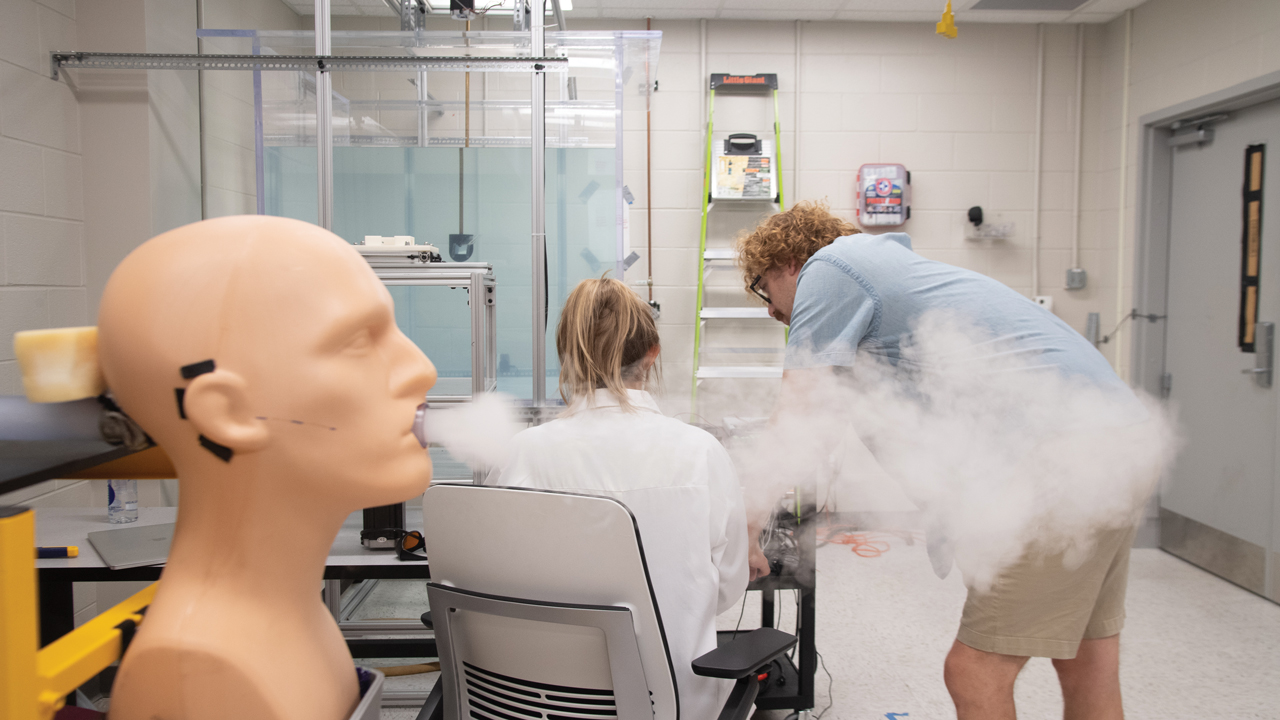Stopping the Spread
To better understand the spread of infectious diseases, assistant professor Vrishank Raghav is considering the underlying turbulent flow physics at play.
By Cassie Montgomery

Being able to predict how droplets are dispersed during coughing, sneezing or speech is critical to understanding the spread of infectious diseases.
Aerospace engineering assistant professor Vrishank Raghav is leading a combined $464,846 National Science Foundation award, in collaboration with the University of Michigan, to explore this topic. In this project, the collaborative team will take existing industry and academic tools a step further by considering the underlying turbulent flow physics at play.
“Droplet-laden flows are ubiquitous both in engineering applications and in nature. For example, fuel injection in engines, paint sprays, air pollutants, platelets in blood, respiratory aerosols, to name a few,” Raghav said. “Our research group started conducting experiments to quantify speech-generated aerosols at the onset of the COVID-19 pandemic, and this NSF grant will help us continue this work. For this study, we will be using a combination of human subjects and an ex-vivo cough simulator at Auburn University to achieve our goals.”
Raghav, in collaboration with researchers at the University of Michigan, will combine 3D time-resolved velocimetry with an extensively validated fluid-particle simulation method, to uncover new flow physics relating the influence of flow interactions on the entrainment and dispersion of droplets. This combined approach will make advances toward the development of improved reduced-order models that could be easily embraced through direct implementation into existing tools.
“Such improved quantification of flow physics and the development of reduced-order models will enable better prediction of droplet dispersion, a key step toward understanding the spread of viral infections,” he said. “The methods developed will be used to study the interaction of droplet-laden expiratory jets with flow barriers, such as face masks and face shields, and evaluate their efficacy to mitigate the dispersion of expiratory flows and contain outbreaks.”

